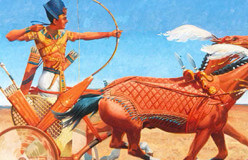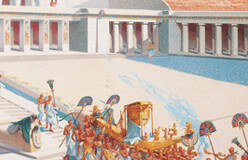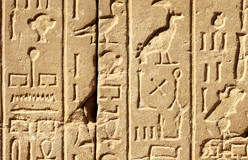The ancient Egyptians worshiped dozens of gods and goddesses, each of whom had different powers.
Many were symbolized by animals or humans with animal heads. To worship certain gods, the Egyptians built temples that held a golden statue of the god locked in a special room. Egyptians believed the gods’ spirits lived in these temples.







